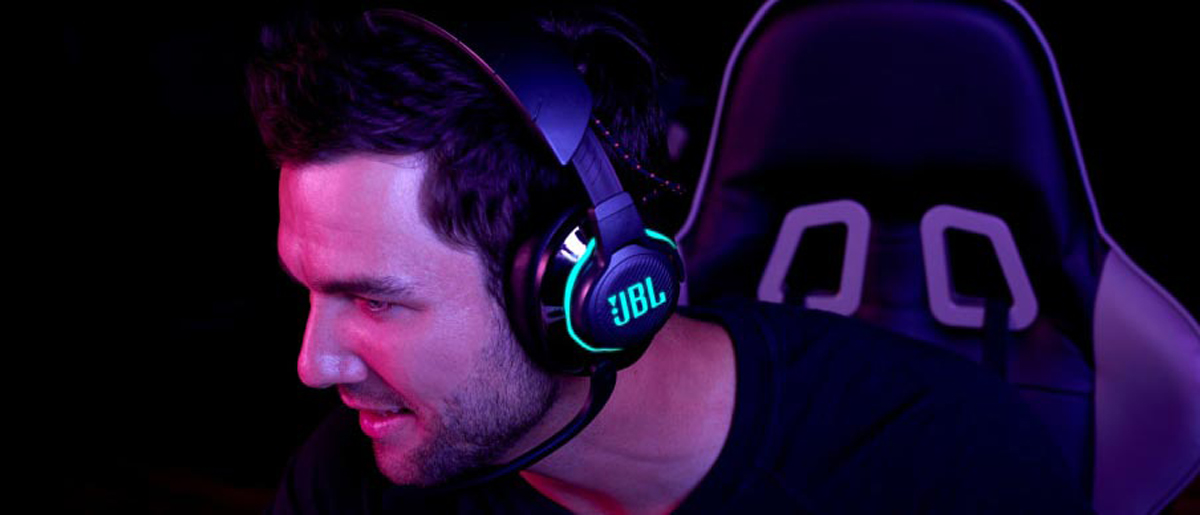Tom's Guide Verdict
The JBL Quantum 800 provides fantastic sound and a comfortable fit, but frustrating interface issues drag down the experience.
Pros
- +
Excellent audio quality
- +
Wired and wireless connections
- +
Comfortable fit
Cons
- -
Expensive
- -
Frustrating interface
- -
So-so battery life and mic
Why you can trust Tom's Guide
The JBL Quantum 800 ($200) is a good wireless gaming headset that could have been great. While JBL is a relative newcomer in the gaming audio space, it’s been doing everyday audio products since 1946, and its pedigree pretty much speaks for itself. Like the more expensive JBL Quantum One, the JBL Quantum 800 is comfortable to wear and sounds incredibly good for both music and games. The problem is that it’s sometimes very frustrating to use.
Compatibility: Mobile, PC, PS4, Switch, Xbox One
Drivers: 50 mm
Frequency Response: 20 Hz - 20 kHz
Wireless: Yes
I enjoyed about 90% of my time spent with the Quantum 800, thanks to its nuanced sound and plush earcups. The other 10% of the time, the headset proved difficult, whether it was forcing me to listen to obnoxious startup sounds or flat-out refusing to play audio through the proper input. At least once, I yanked the Quantum 800 off my head, chucked it aside and simply plugged in another headset, cursing the whole way.
The Quantum 800 is pretty expensive, and yet it does offer a lot of features for the price. It’s not one of the best gaming headsets on the market, but it’s worth considering, especially if audio quality is paramount. Read on in our full JBL Quantum 800 review to learn more.
JBL Quantum 800: Design
For a very expensive headset, the JBL Quantum 800 actually looks kind of cheap. Its expandable plastic headband looks a little flimsy, and its earcups have plastic mirrors, which pick up fingerprints like nobody’s business. The boom mic on the left earcup isn’t removable; I feel that a mic in a headset this expensive should be removable or retractable, but at least it’s there when you need it.
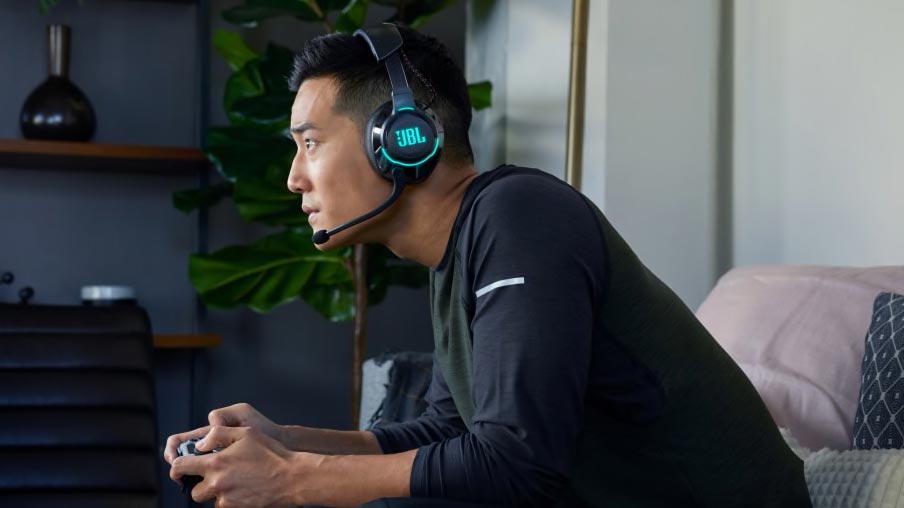
The left earcup is where most of the action happens, with a noise canceling button, a chat/game mixer dial, a volume dial and a mic mute button. I’ve gotten on my high horse before about putting the chat and volume dials right next to each other, but I think the point still stands. When the two dials are so close together and feel exactly the same, a headset is practically begging the user to adjust the wrong one. There’s also a USB-C power port, and a 3.5 mm audio port. In addition to a USB dongle, the headset comes with a USB cable for charging and a 3.5 mm audio cable for console play.
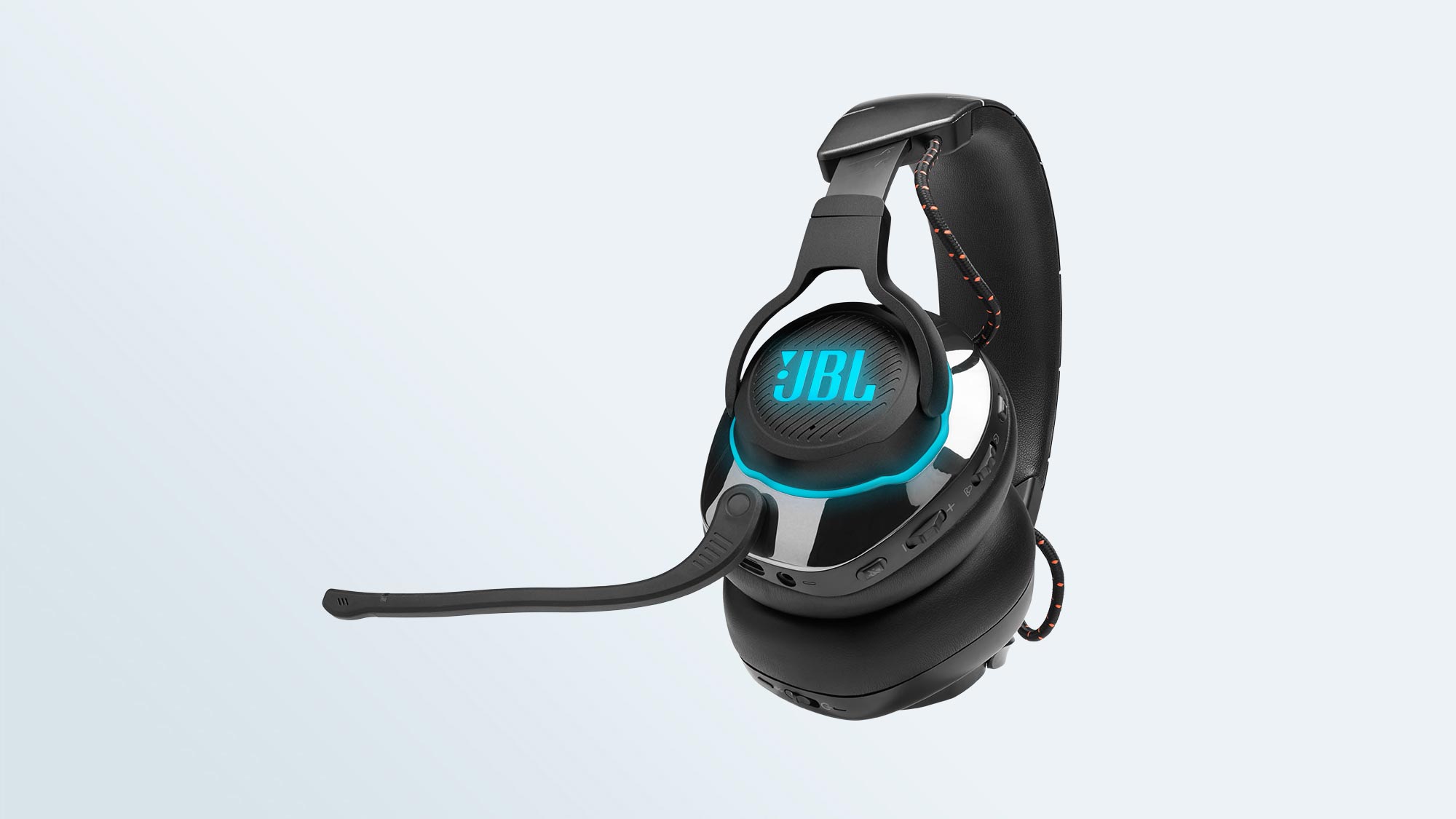
The right earcup houses only the on/off switch, which doubles as the Bluetooth activator. This switch was one of my first and most consistent points of frustration with the device, as the differences between the “on,” “off,” and “pairing” modes are subtle, at best. Often, I’d want to wake up the headset after a prolonged sleep mode, and wound up unpairing it from its USB dongle instead. (Re-pairing it requires you to press a button on the dongle itself, so good luck if it’s in back of your PC.)
While the Quantum 800 is navigable enough, I was hoping for something that looked and felt a little more elegant. There are cheaper wireless headsets that look and feel much better — the SteelSeries Arctis 7 ($150) and the Turtle Beach Elite Atlas Aero ($150), for starters.
JBL Quantum 800: Comfort
With plush foam earcups and a padded, airy headband, the JBL Quantum 800 is very comfortable, even over long stretches of time. The earcups make a surprisingly tight seal around the ears, but in my experience, this didn’t cause any discomfort or pain over time. It did, however, block out a lot of extraneous sound, which I appreciated. The earcups also fold flat, for easy transportation.
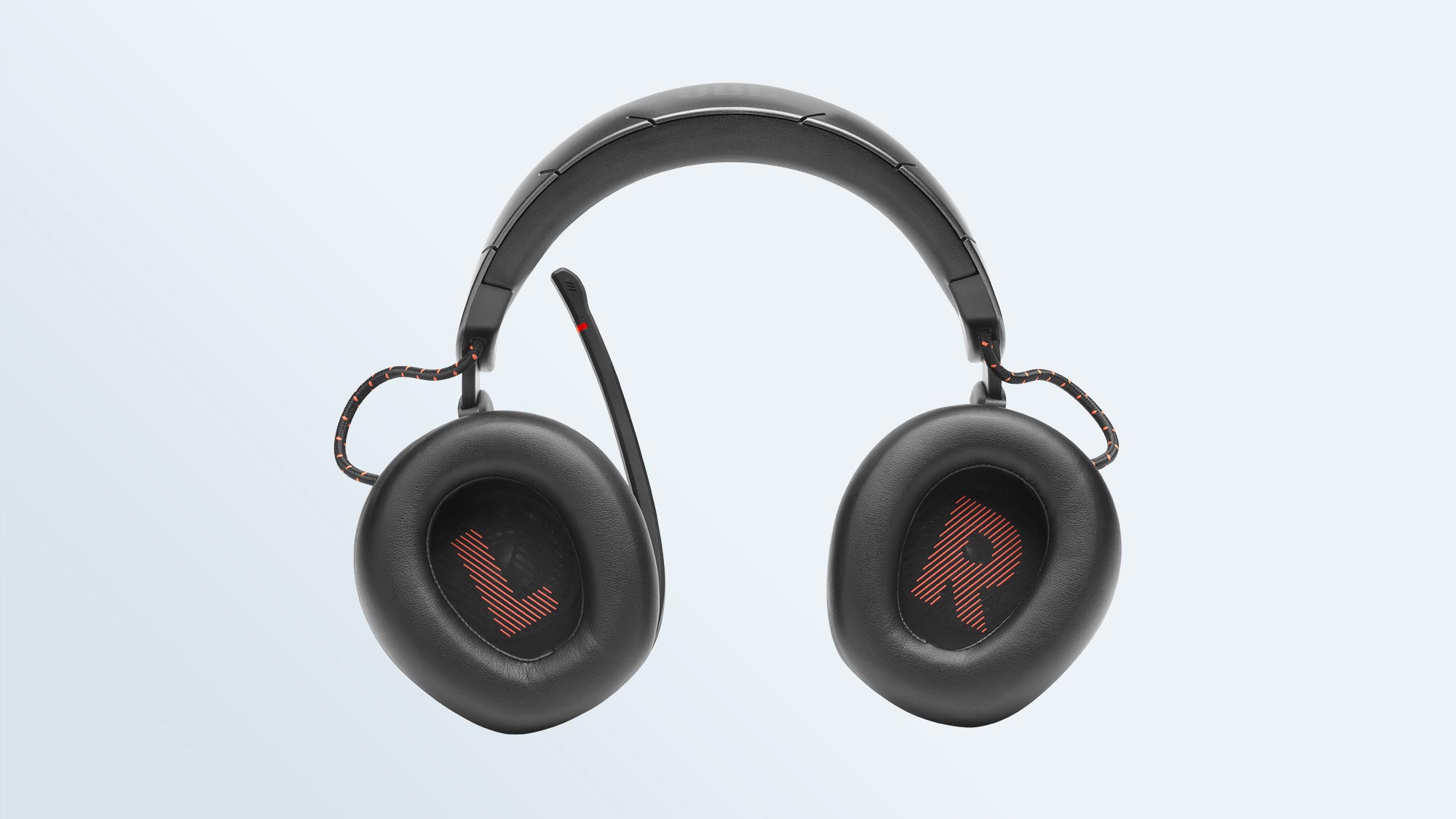
Getting a good fit is fairly straightforward, thanks to numbered notches in the extendable headband. I wish the headband had been metal rather than plastic, as headband plastic tends to get pretty brittle and breakable after a few years. It seems like a cheap design decision in an otherwise expensive headset.
I found the Quantum 800 comfortable and relatively easy to get a good fit, but if you prefer headsets on the looser side, it might not be for you.
JBL Quantum 800: Gaming performance
JBL is one of the go-to names in audio tech, and from the moment I put the JBL Quantum 800 on my head, it was clear why. I ran the headset through a variety of games on a variety of consoles, including Doom Eternal, Assassin’s Creed Odyssey, Shadow of the Tomb Raider and Age of Empires II: Definitive Edition. The headset works wirelessly on PC and PS4, and via 3.5 mm audio cable for Xbox One and Switch.
(I was extremely disappointed to learn that the Quantum 800 does not connect wirelessly to a docked Switch, but the Switch dock is extremely hit-or-miss with wireless headsets. This isn’t really JBL’s fault.)
I was especially pleased with the device’s wireless performance on the PC and PS4. The Quantum 800 did a fantastic job balancing voice work, sound effects and music, whether it was listening to Lara Croft’s groans of exertion while scaling a stony edifice, or the rapid discharge of bullets tearing a demon’s guts apart. I especially enjoyed playing Age of Empires II, though, as the Quantum 800 let me focus on the gorgeous soundtrack and zone out to the chill medieval tunes.
The audio performance is nearly as good in its 3.5 mm audio mode — and its Bluetooth mode, which is a huge boon for modern, jack-less smartphones. The fact that the Quantum 800 works with almost any system is a feather in its cap.
JBL Quantum 800: Features
Here’s where the JBL Quantum 800 doesn’t work quite as well as it could. I’ve already discussed the mercurial power button, but turning the system on and off is a breeze compared to getting a computer to actually recognize it. Unlike most other USB headsets, the Quantum 800 uses five different drivers to manage its sound. If you think that sounds complicated, you’re absolutely correct. Windows won’t recognize the right drivers at first, meaning you have to go into your sound settings and manually switch from the “headset” driver to a “speaker” driver. This also means that the headset’s volume doesn’t correspond directly with the volume in Windows, which is a pain if you like using keyboard media controls.
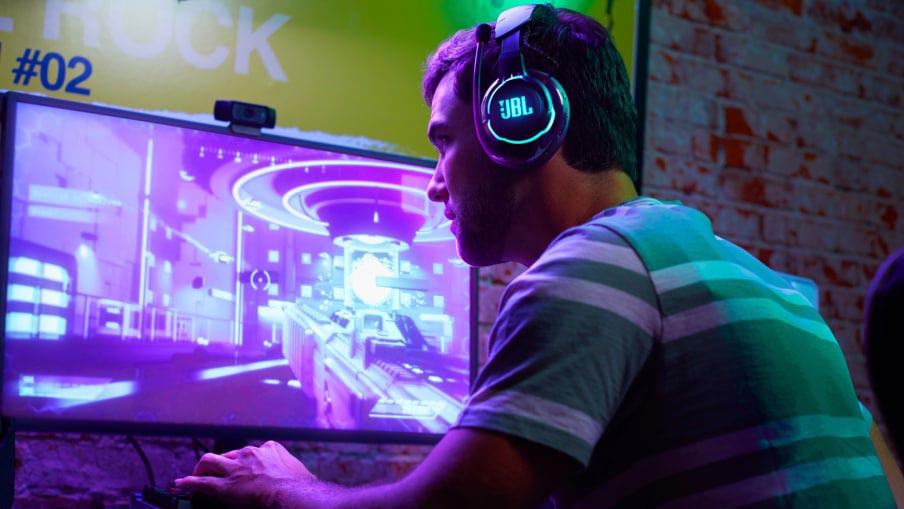
Having all these competing drivers also makes it profoundly difficult to make each program recognize the proper input. Sometimes, I’d be listening to music in VLC, pause it to bring up a YouTube link, and have the YouTube music play through my speakers instead. I often had to restart my entire machine before Google Meet recognized the Quantum 800’s microphone.
In the single most frustrating incident of my time with the headset, voice chat on Discord recognized the mic just fine, but wouldn’t recognize the audio output for love or money. As I tried to restart the headset, I pressed the power button too far, and it started trying to pair again instead. I tore the USB dongle out of my computer, tossed it aside, and plugged in a tried-and-true Corsair headset instead. This is pretty much the worst-case scenario for a gaming headset.
There are also all the obnoxious, loud sound effects to discuss. When you start up or shut down the Quantum 800 (or when it shuts down after an idle period), it makes a series of jarring beeps and buzzes. You can’t lower the volume, and you can’t disable them. Sometimes, I’d be sitting quietly, feeling calm and collected, and then get scared out of my wits as the annoying notifications started buzzing in my ears. It’s not really the kind of thing you can train yourself to get used to.
The battery life, software, and mic are all just OK. JBL estimates that you can get 14 hours if you turn all the lights off; I got about 10 with the lights on, so that’s conceivable. The Quantum Engine software lets you toggle surround sound, select equalization profiles and adjust mic options. But you can’t set up profiles for individual games and apps, which would have saved a lot of unnecessary fiddling around. My coworkers damned the microphone with faint praise as “standard gaming headset quality.”
JBL Quantum 800: Music performance
When it comes to music quality, the JBL Quantum 800 succeeds where a lot of gaming headsets fall short. Like JBL’s audiophile headsets, the Quantum 800 provides rich, detailed soundscapes that deliver a healthy amount of bass, robust trebles and crystal-clear voices.
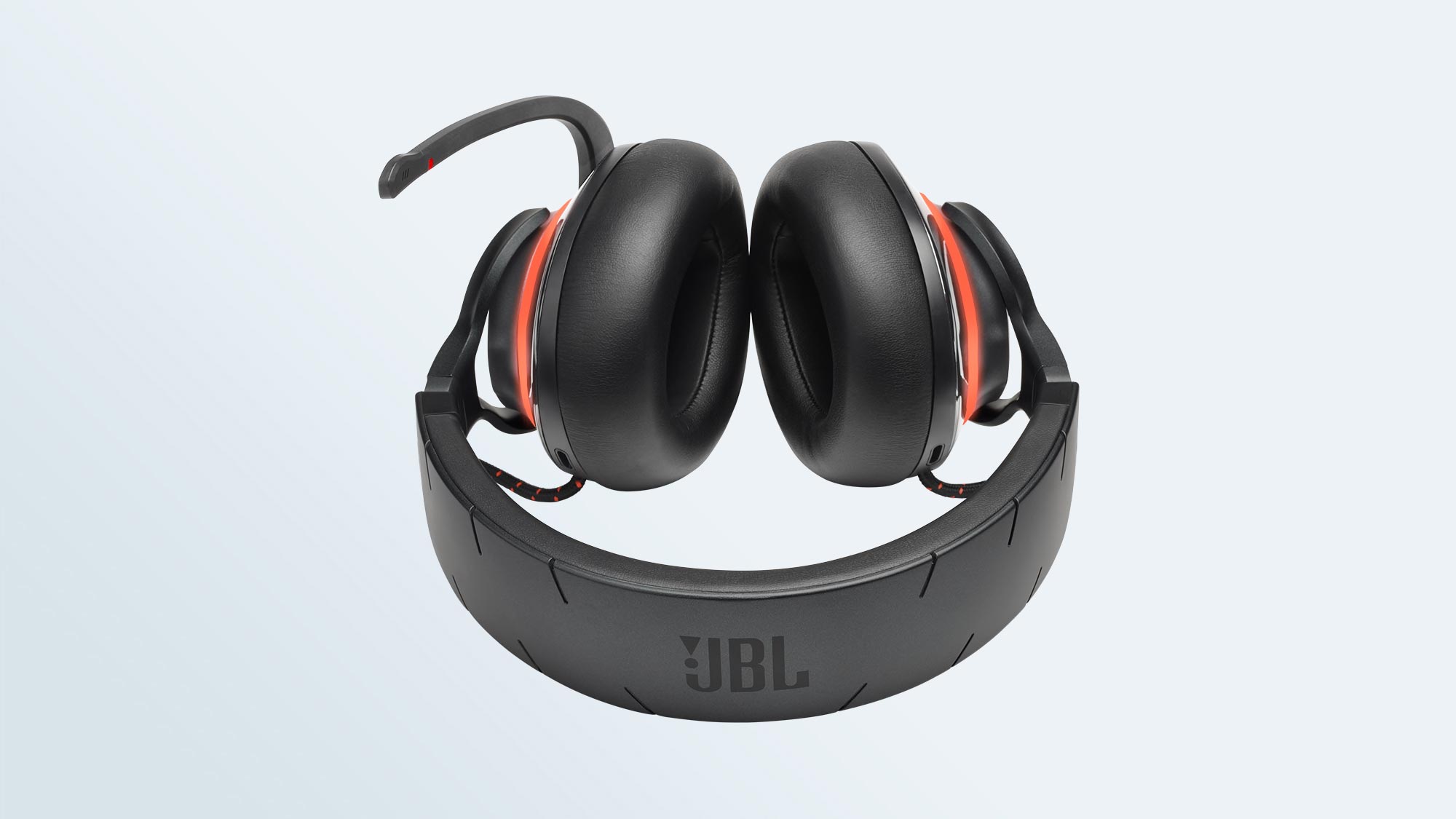
I listened to music from Flogging Molly, Old Crow Medicine Show, The Rolling Stones and G.F. Handel in both wired and wireless configurations, and I found the Quantum 800 nearly up to the level of a comparably priced pair of music headphones. It’s a shame that you can’t remove the microphone, otherwise the Bluetooth functionality would make it an easy sell for trips and commutes. (When we can have trips and commutes again, anyway.)
JBL Quantum 800: Verdict
I look for two important criteria in a gaming headset: Is it comfortable to wear? And does it provide good sound? If the answer is “yes” to both, the rest is often of secondary importance.
As discussed in my JBL Quantum 800 review, I found the device positively infuriating at times. For such an expensive gadget, it feels surprisingly unpolished. Sometimes just getting a PC to recognize the proper audio channel is more trouble than it’s worth.
But at the same time, the Quantum 800 is rich in features, and sounds great for both games and music. It connects via USB, Bluetooth and 3.5 mm cable; it lets you customize EQ profiles; it works with just about every game system on the market. That all adds up to a pretty compelling argument in its favor.
The Arctis 7 or the Atlas Elite Aero are still my go-to recommendations for wireless gaming headsets, but if you don’t mind shelling out a little extra money for excellent music, the Quantum 800 is worth considering. Just be aware that you’ll have to occasionally work for your fun.
- More: Want another alternative? Read our Corsair Virtuoso RGB Wireless SE review
Marshall Honorof is a senior editor for Tom's Guide, overseeing the site's coverage of gaming hardware and software. He comes from a science writing background, having studied paleomammalogy, biological anthropology, and the history of science and technology. After hours, you can find him practicing taekwondo or doing deep dives on classic sci-fi.
-
teste2 while playing (2.4gh wireless) is it possible to answer a phone call (bluetooth) and continue with the game sound at the same time? or the game sound is paused when the bluetooth connection is answered?Reply -
tb_eest Reply
Yes! Spotify continues to play just fine on my computer, with Bluetooth connected to my phone.teste2 said:while playing (2.4gh wireless) is it possible to answer a phone call (bluetooth) and continue with the game sound at the same time? or the game sound is paused when the bluetooth connection is answered?
The mic seems to output to both computer and phone at the same time.
One of the things I'm worried by is the headset not being able to both charge and connect wirelessly at the same time. You can't play through USB either. You'll have to plug in both USB and an audio jack at the same time if you want to continue listening while charging.
It has an advertised battery life of ~14 hours with the lighting off and a 2 hour charge time. I assume having Bluetooth and 2.4GHz connected at the same time won't do the battery any favours either, not to mention noise cancelling. You can't easily turn off Bluetooth after using it on top of that. The quickest way I've found (other than turning the entire headset off and on) is by having the bluetooth go into pairing by holding the button, then pressing the button again and it'll turn off. You can't simply press it to turn it off.
JBL in their FAQ on wireless connection while charging said:JBL is committed to providing the most optimal consumer experience through superior immersive audio. Our Quantum 800 / 600 headsets are designed to be connected via 2.4Ghz, BT (800 only), or 3.5mm jack. USB-C port is only designed for charging the internal 14hr battery and does not provide an audio connection. However, you can use the 3.5mm audio connection while charging. This is an intentional design decision. We value your feedback and have communicated it directly to our product designers for future consideration.
